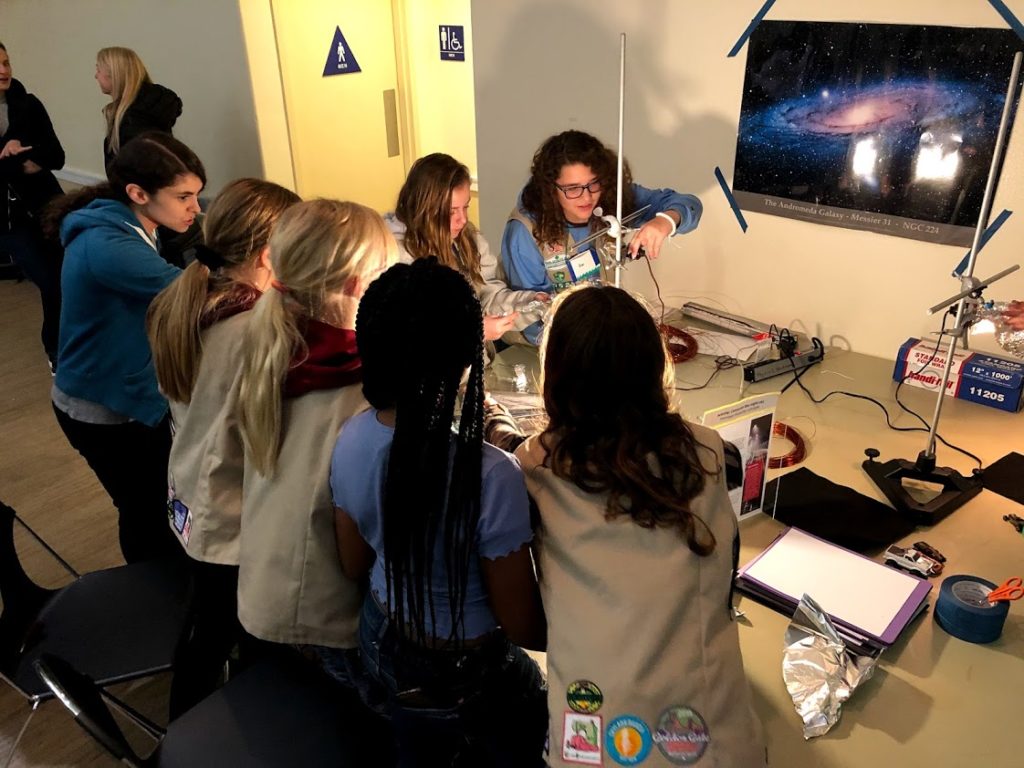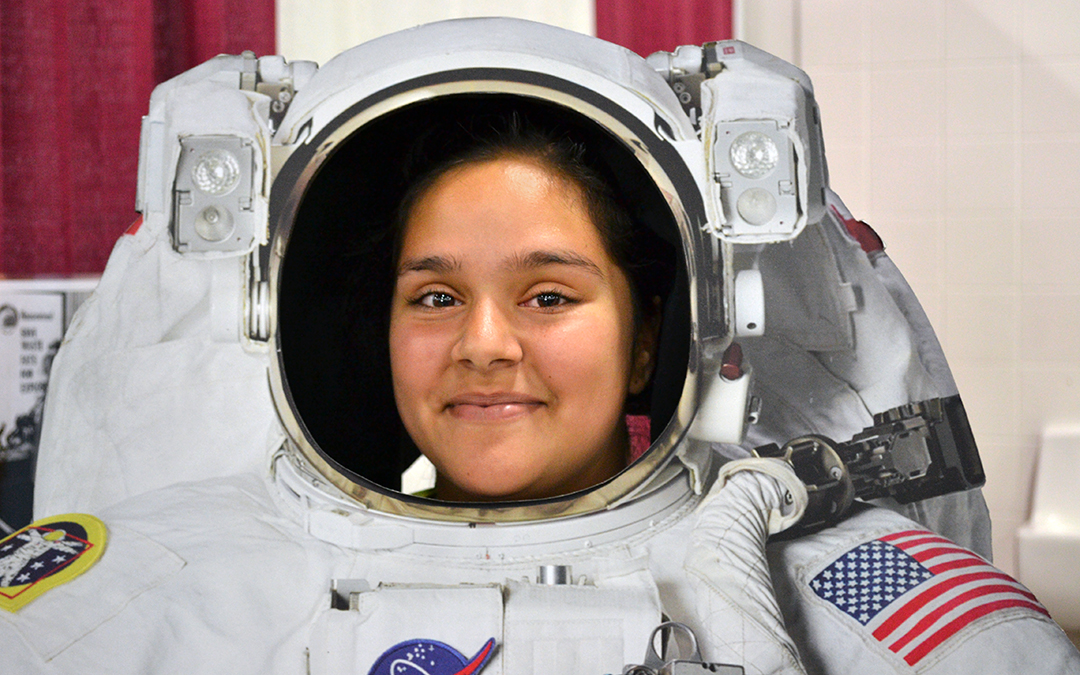Have you ever wondered about the vastness of the space while lying in a field, gazing up at the stars? Or maybe you proudly watched NASA astronauts Christina Kock and Jessica Meir complete the first all-woman spacewalk outside the International Space Station. Space is a marvelous place, one that leaves us asking what, how, and why of the universe.
Save it for later!
The new older girl Space Science badges are a great place to start answering these questions and interests. These badges, funded by Reaching for the Stars: NASA Science for Girl Scouts, were developed by GSUSA alongside the SETI Institute, Astronomical Society of the Pacific, Girl Scouts of Northern California, and other subject matter experts.
I’m not an astrophysicist or rocket scientist. Can I lead an older girl Space Science badge?
Affirmative, you are cleared for launch!
Fear not, these badges were pilot tested by a variety of troops across the country. A special thank you to the Northern California troops who volunteered their time and feedback to help make these badges a reality.
What’s it like to earn these badges?
You’ll find a wide variety of activities, from indoor hands-on activities that introduce concepts, to steps that take girls outside to explore daylight or the night sky. The badges also include opportunities to get online with NASA and astronomy resources, like controlling a remote telescope, videos on light and the Electromagnetic Spectrum, doing citizen science, or learning about NASA divisions and careers.
Girls complete one activity from each of five steps to earn the badge. Activities take an average of 20–30 minutes, although some take longer. While you can find all badgework in the colorful, resource-filled badge booklets (available in Girl Scout stores and online), there’s a wealth of additional materials available on the Volunteer Toolkit, such as resource pages of links, printable game cards, and convenient checklists.
Read through the booklet and/or the VTK meeting script. The booklet is full of sidebar facts, women in STEM, and “For More Fun” activity ideas. To generate the VTK script, the leader will need to select activity choices, so have your troop decide their badge activities in advance using the VTK Activity Choice resource sheet Most badge steps can be completed with common household items, a few activities require specialty items.
All three levels of older girl Space Science badges include opportunities to:
- Observe the night sky. Consider adding the nighttime badge activities to your troop’s next campout, or find a local Night Sky Network Star Party.
- Try astrophotography. The badges include photograph “shot lists”, along with tips on using your camera or smartphone after dark.
- Collect data and participate in a NASA Citizen Science project.
- Get to know a few women through history who have made important discoveries (download free posters) as well as Women@NASA making great strides today.
Cadette Space Science Researcher (Grades 6–8)
How are rainbows and Space Science related? Are stars all the same? What can (and can’t) we see in the night sky?
Discover the hidden secrets of visible light by making rainbows, be an “invisible” light detective, discover the diversity of stars as you play a classification game, head outside and explore the night sky, and learn how to conserve the dark.
For more fun: Grab your devices and explore light with online interactives like View Space or NRAO’s Cosmic Coloring.

Senior Space Science Expert (grades 9–10)
Am I really made of stardust? How do stars change over time? How do telescopes work?
Throughout the badge, find stellar arts-integrated activity choices, such as making stardust self-portraits, scrapbooking the lives of stars, or hosting a cosmic performance. Then ground yourself by seeing how your eyes react to light or compare to telescopes.
For more fun: Get to know the “Harvard Computers”, an incredible group of women whose work in astronomy was key to our modern-day understanding of the stars – including many concepts in the Space Science badges. Check out the Cosmos episode “Sisters of the Sun” or learn more about Henrietta Swan Leavitt in the play “Silent Sky.”
Ambassador Space Science Master (grades 11–12)
The Ambassador badge is highly customizable by girl interest. Since girls can do much of the badgework individually, consider spending your troop meeting time discussing and sharing badgework experiences and discoveries. You’ll find opportunities to research NASA careers and tackle a personal-interest space project.
For more fun: Complete Step 1 with Small Worlds, an online interactive designed just for Girl Scouts. As you detect exoplanets, you’ll hear from women who were critical to the missions’ successes.
Whatever your Girl Scout level, there’s now a Space Science badge to ignite your girls’ interests and help them reach for the stars! If your troop has already done older girl Space Science badgework, we welcome your tips and experiences in the comments below.
What to do next:
- Find extra ways to engage your girls’ stellar interests with Vivian White’s Trailhead article, Astronomy Adventures: Five ways to Explore the Stars with Girl Scouts.
- Join or start an astronomy club with your service unit.
- Complete your Space Science badge at a Chabot Space & Science Center badge overnight.
- Encourage girls to use their knowledge and leadership skills to plan a younger girl Space Science badge event.

Jessica Henricks—Jessica is a STEM Program Manager for Girl Scouts of Northern California, where she develops and supports NASA-funded Girl Scout Stars space science programs and STEAM experiences. She fondly remembers sleeping outdoors for the first time at Girl Scout Camp Hidden Falls. Before joining Girl Scouts, Jessica created resources, media, and events with organizations like the Exploratorium and Maker Media. In her spare time, she enjoys tinkering in the workshop or going for a paddle on the bay.


